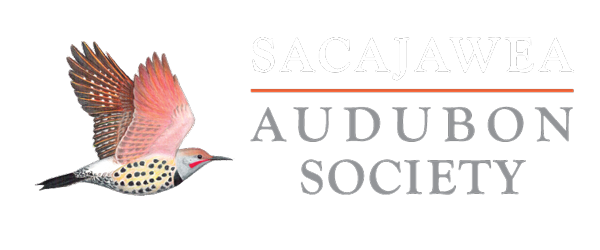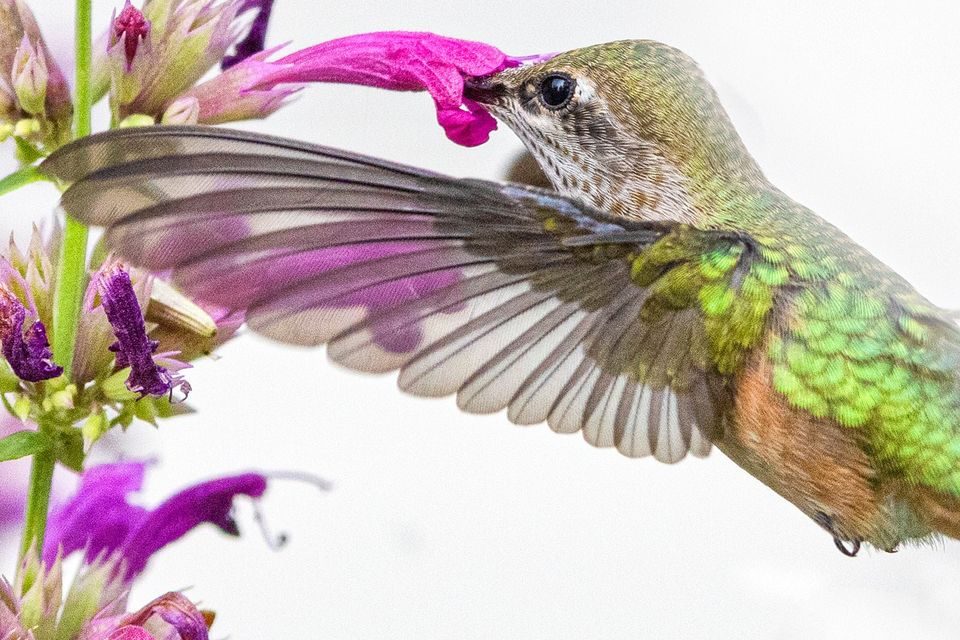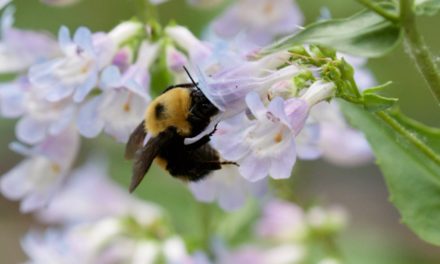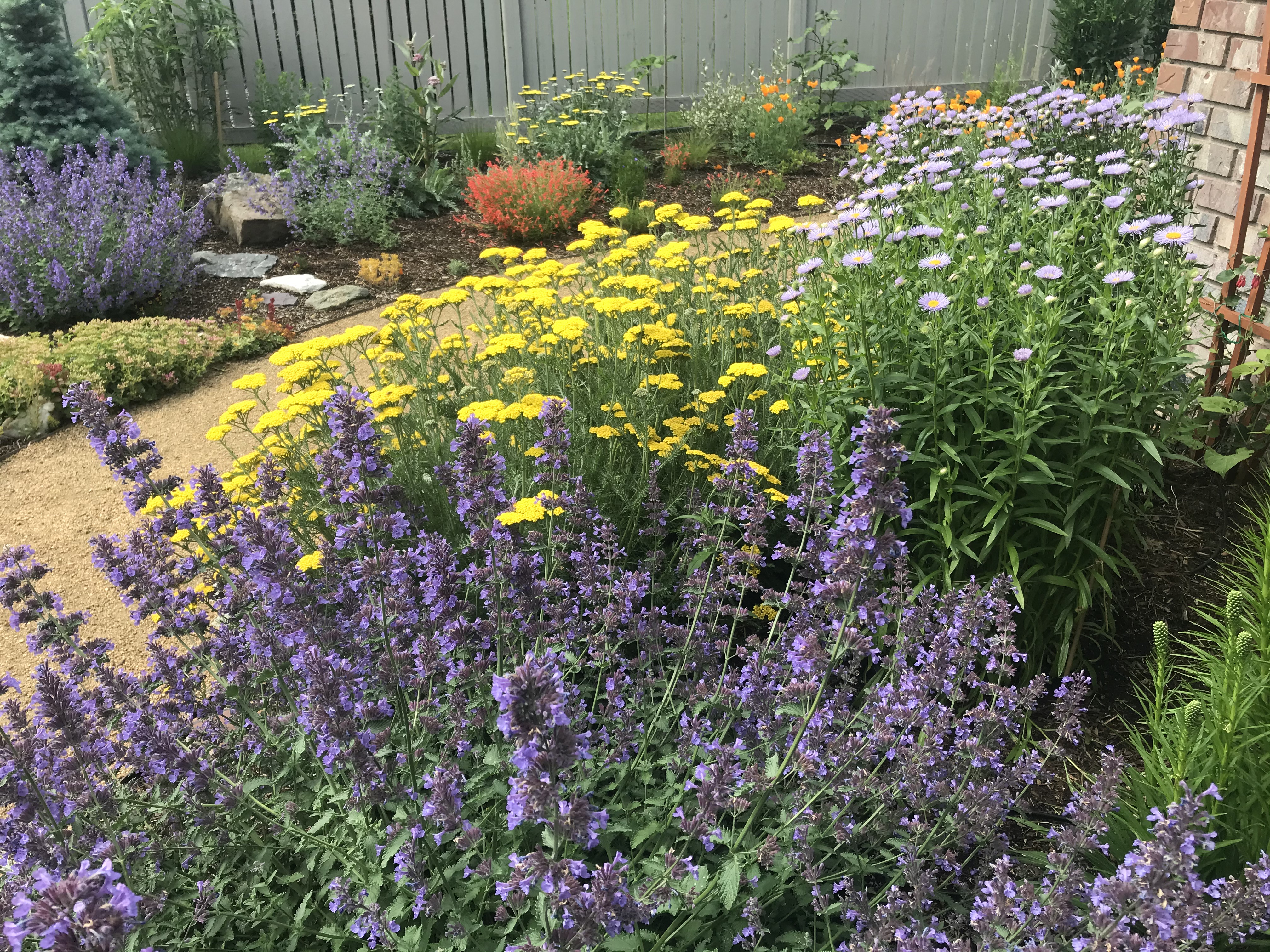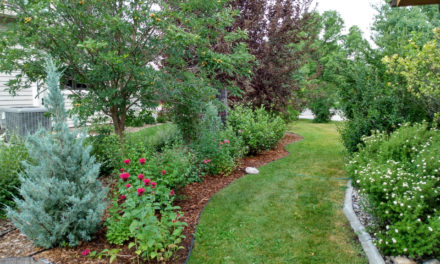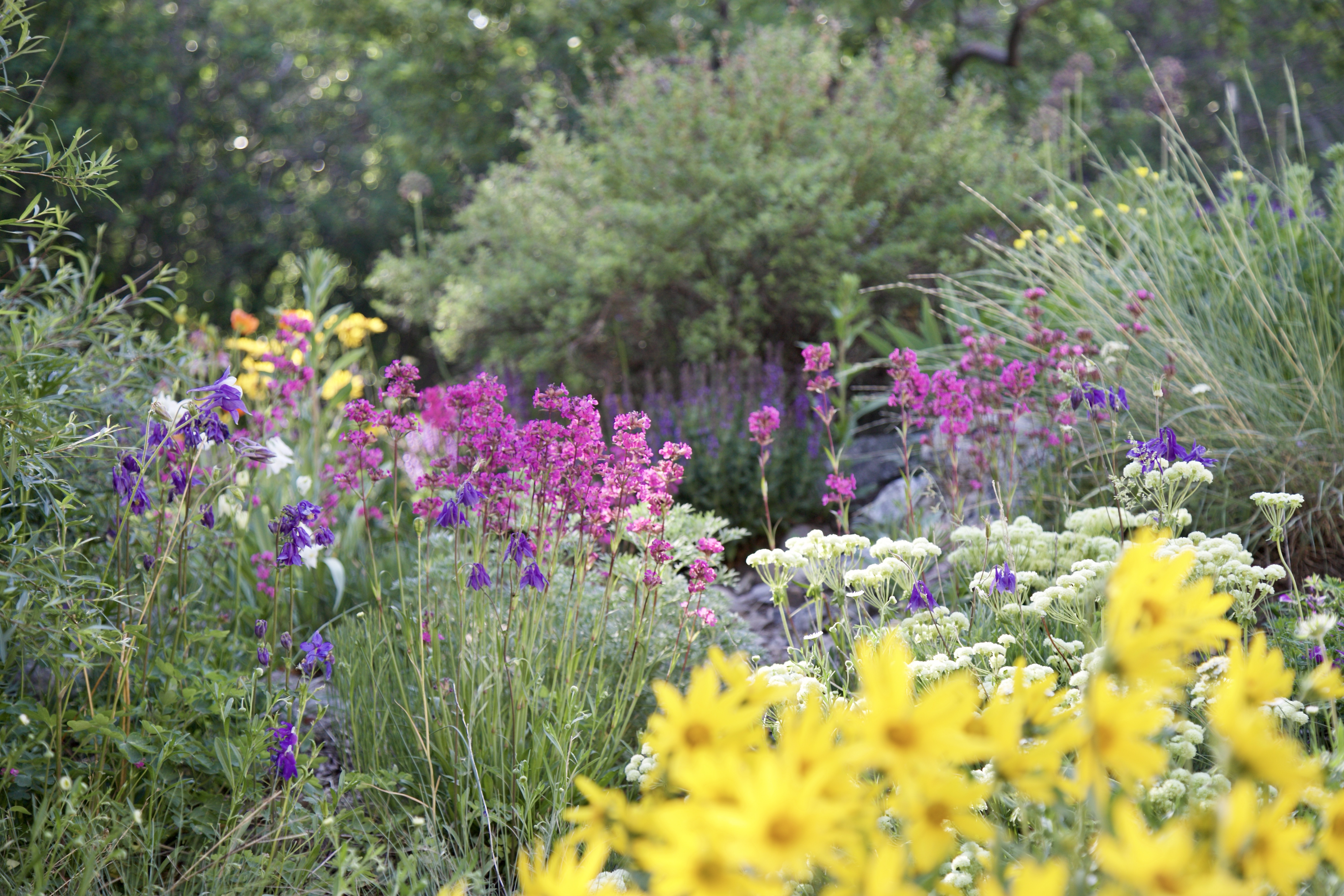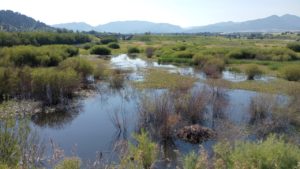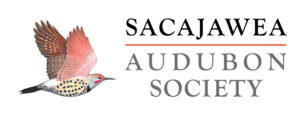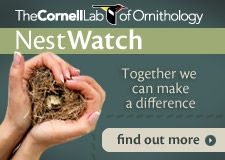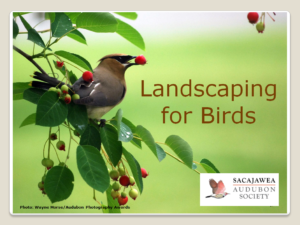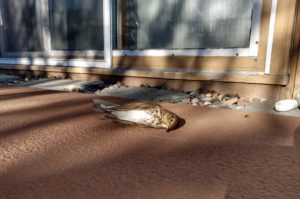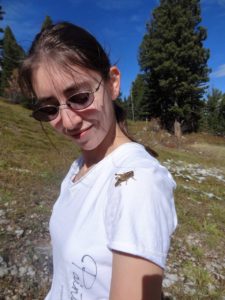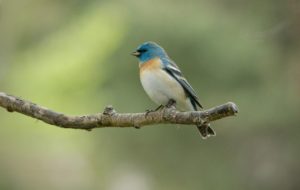By Adele Pittendrigh
Many Sacajawea Audubon Society members are luring birds and butterflies to their yards through Bird-friendly Landscaping. Some have been doing this for years while others, like myself, are just starting to transform their yards with native plants to attract birds and other pollinators.
Karin & Stuart Jennings
Karin and Stuart Jennings began landscaping their yard for birds 20 years ago when they built their home. Karin’s dad was a landscape architect, and she is a life-long birder and gardener. She and Stuart planted their yard with the seasons in mind so that there is something of interest for birds throughout the year. Cedar Waxwings, for instance, are now feeding on the fruit of cotoneaster, chokecherry, and mountain ash. In the spring Western Tanagers have been observed feeding on the cotoneaster blossoms. They also plant species that attract the insects that birds like to eat. Karin says her favorite birds are the Pine Siskins. “They are acrobatic and brave,” she says. “You can almost walk right up to them.”
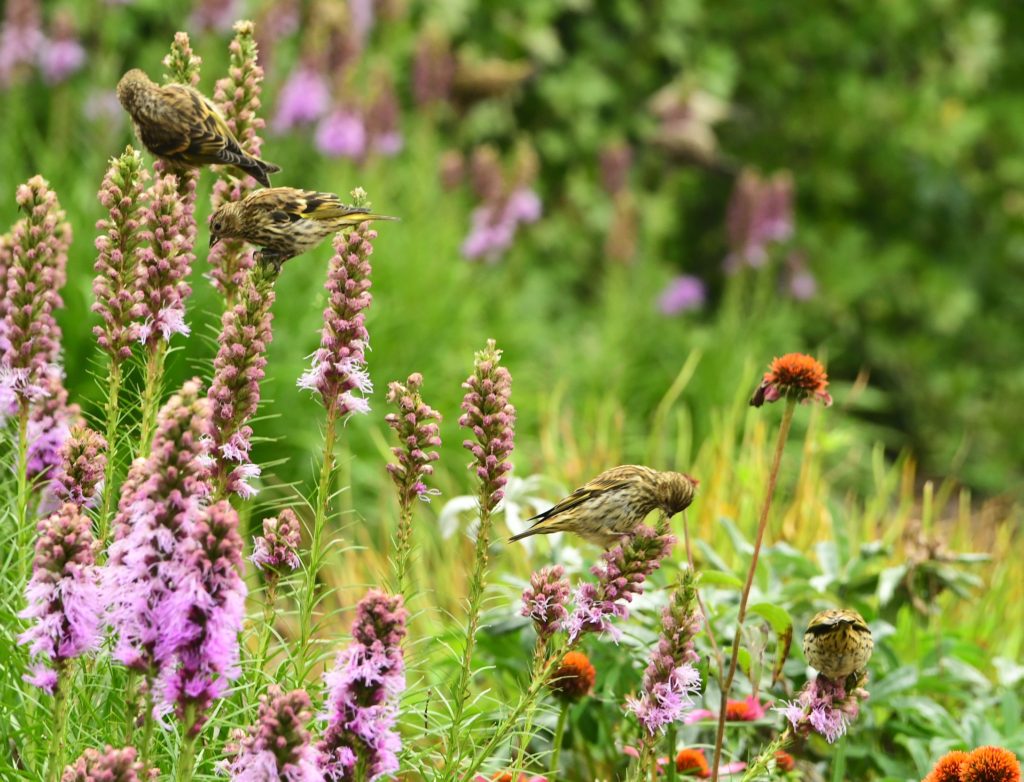
Photo of Pine Siskins by Stuart Jennings
Kenna & Steve DuBois
Kenna and Steve DuBois lived in the interior of Alaska for 40 years before moving to Montana in 2015. They didn’t see many hummingbirds in Alaska, but they’d traveled to Arizona and Costa Rica where they saw lots of them. When Steve and Kenna moved to Montana, they wanted to see more hummingbirds. They planted nectar flowers to attract hummers in their first Montana home in Livingston, and then again when they moved to Bozeman. This year they planted salvia, penstemon, bee balm, fireweed, and hyssop (or agastache) to attract hummers. The hummers showed up and used all five plants but used hyssop the most. Steve wondered how a hummer can drink from an individual flower and then come back soon after to drink again. He found an article in the Journal of Botany that says a flower blossom will recharge with nectar in 1–2 hours.
Hyssop or agastache? These common names get used interchangeably. The true Hyssopus officinalis is blue flowering and native to southern Europe and Asia. Many agastache species are native to Montana and North American and cultivars have been bred for colorful red, pink, and orange flowers and are often marketed as hyssop or hummingbird mint. These lovely flowers are definitely going on my plant list next year to attract hummingbirds.
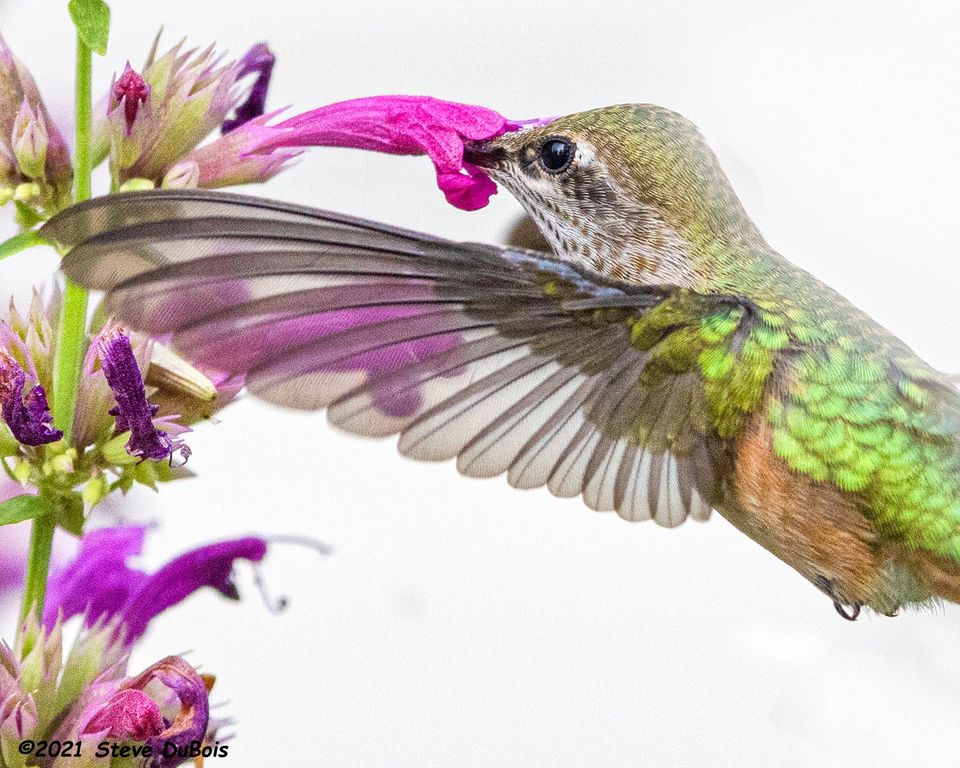
A Calliope Hummingbird drinks from a hyssop/agastache blossom. Photo by Steve DuBois.
